Significant cooling trends of up to 1°C have been ongoing in the southeastern US since the late 1800s. A new study suggests that higher precipitation trends are linked to decreasing temperatures in this region, comparable to what has happened in other cooling periods (i.e., the Little Ice Age).
The southeastern United States – and the central and eastern half of the US in general – has not been warming in the last century (Rogers, 2013, Alter et al., 2018, Partridge et al., 2018).
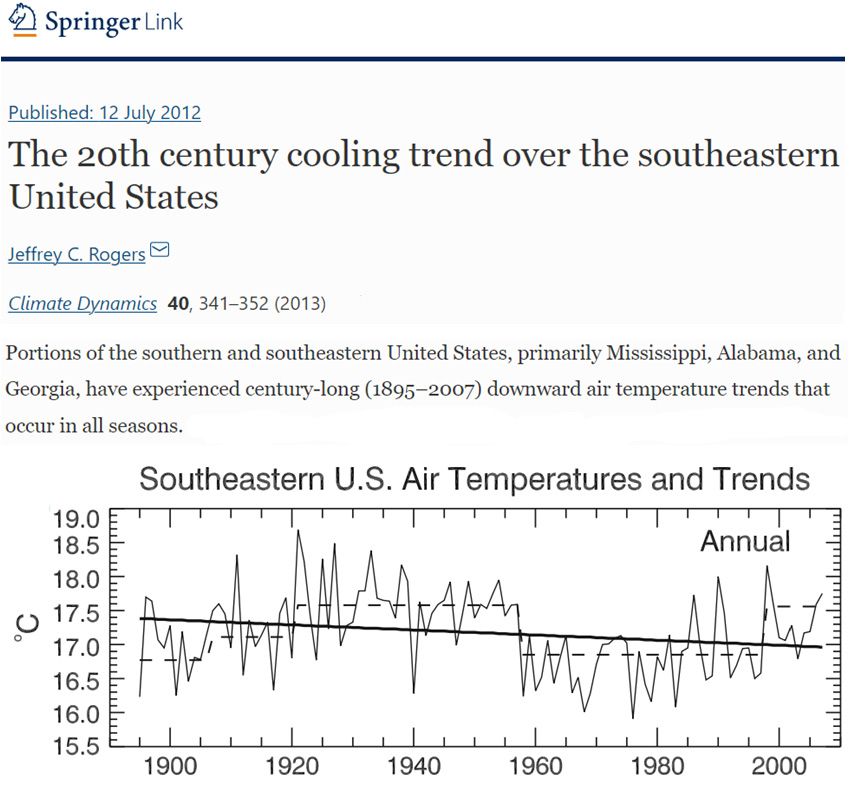
Image Source: Rogers, 2013
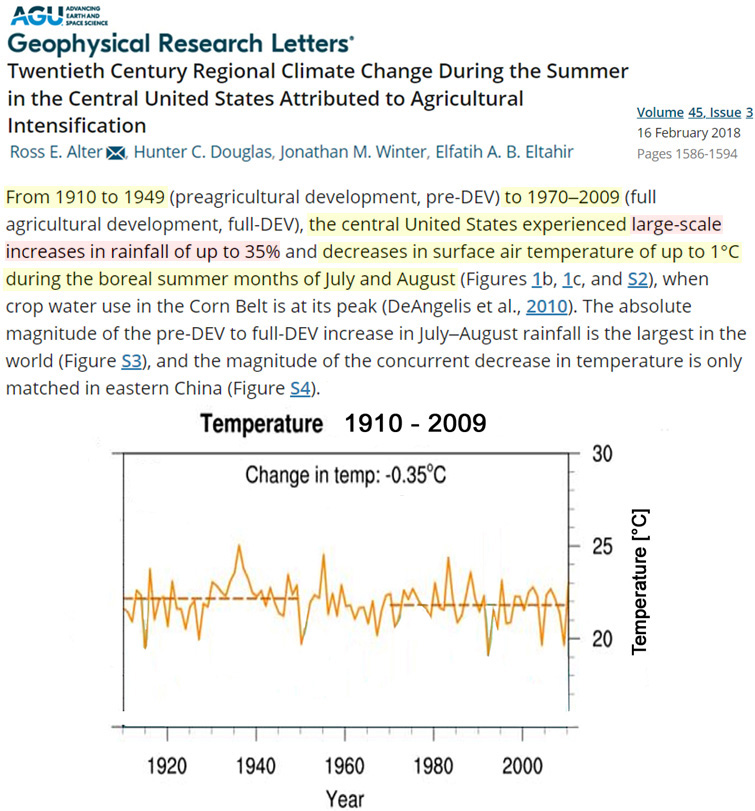
Image Source: Alter et al., 2018
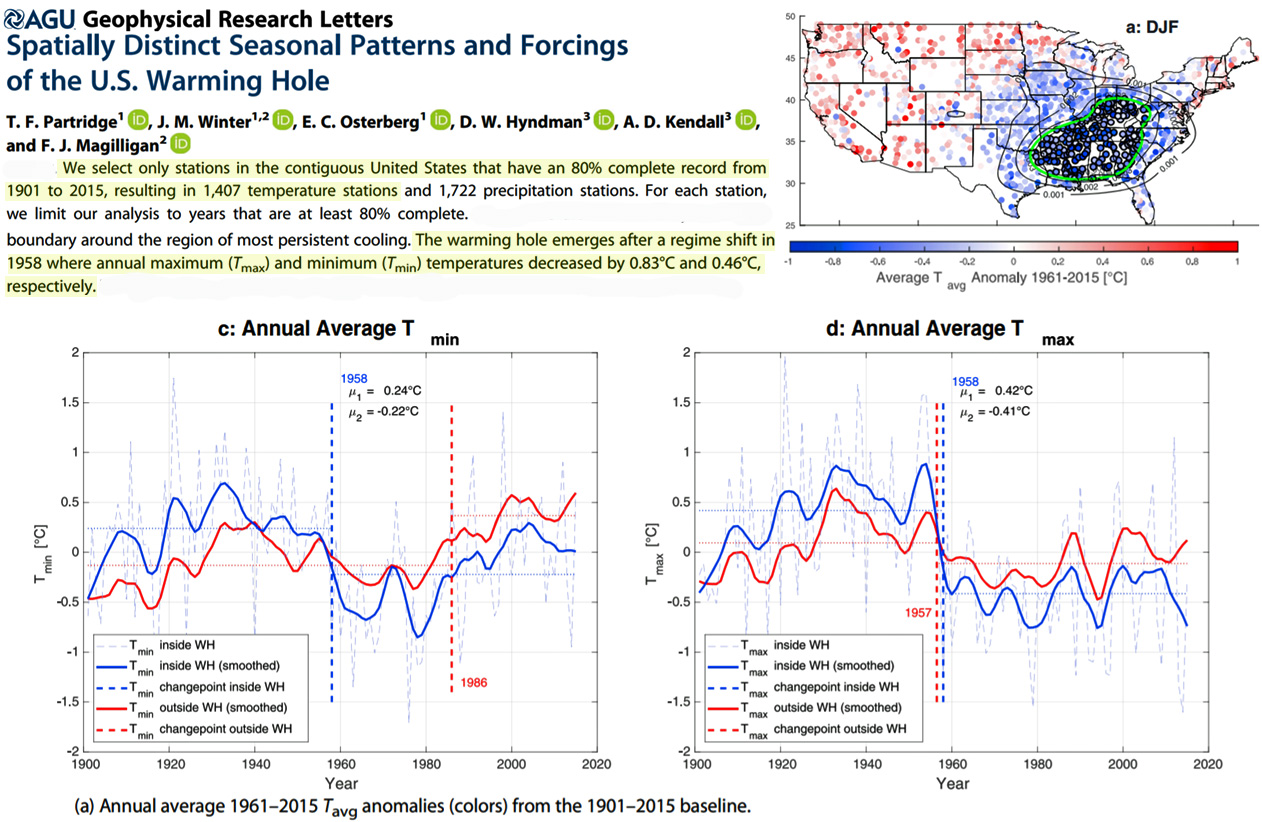
Image Source: Partridge et al., 2018
A new study uses proxy evidence (stalagmite) from the state of Alabama to reconstruct a hydroclimate record associating century-scale periods of significant cooling (Younger Dryas, 8.2k event, Little Ice Age) with increases in precipitation. 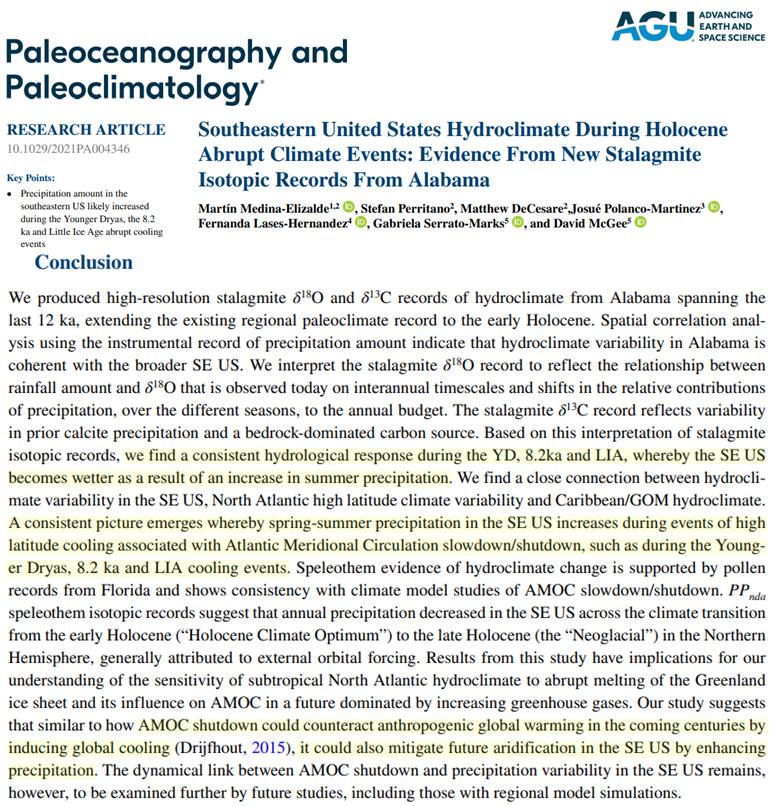
Image Source: Medina-Elizalde et al., 2022
Considering Alabama’s temperatures have cooled by about -0.5 to -1°C since the 1930s and 1940s (Christy and McNider, 2016), it would appear (a) the Little Ice Age trend has been ongoing for this region, and (b) higher regional precipitation trends may be linked to the cooling.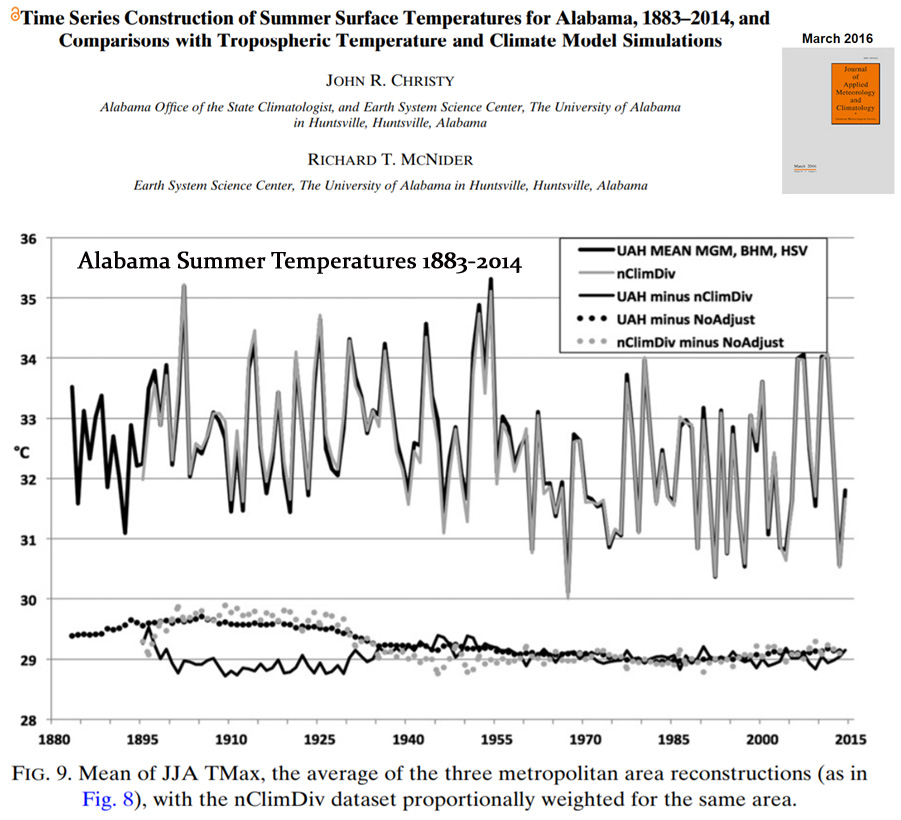





Any chance modern intensive irrigation might have something to do with this?
[…] No Tricks Zone. SO, did you say Global Warming, er Cooling? […]
Deceptive title
There was a warmer period
Then A COLDER PERIOD
AND THEN BACK TO WHERE THE DATA STARTED IN 1900